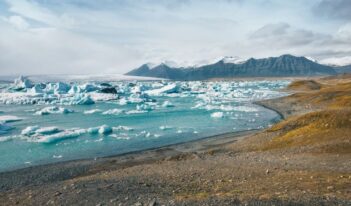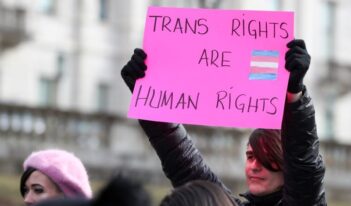
Federal agencies under President Trump will harm public health by hiding information from the public.
When the Francis Scott Key Bridge in Baltimore, Maryland, collapsed after it was struck by a container ship, six construction workers were killed. According to estimates made at the time, the state of Maryland could lose up to $15 million a day in revenue as containers are routed to rival ports. The cost of replacing the bridge, a process that will take years, is expected to exceed $1.5 billion.
The Key Bridge collapse was avoidable. In 1991, the American Association of State Highway and Transportation Officials issued a guide for designing over-water bridges “to minimize their susceptibility to damage from vessel collisions.” The guide recommended that bridges built before 1991 undergo vulnerability assessments to identify and respond to the risk of a catastrophic collapse from a vessel collision, even though federal law only requires such assessments for bridges built later.
The Maryland Transportation Authority never conducted a vulnerability assessment on the Key Bridge. After the collapse, the National Transportation Safety Board determined that if the state agency had conducted one, it would have found that the bridge’s risk level was almost 30 times greater than the Association’s risk threshold for critical or essential bridges.
The vulnerability assessment that might have averted the Key Bridge tragedy is a form of risk assessment. Risk assessment is the process of deciding how dangerous the subject of an evaluation is. If a risk assessment indicates that something poses unacceptably high risks, the public or private entity conducting the assessment can identify and select among available options to reduce the risk. Risk assessment alleviates ignorance, and ignorance of the kind that preceded the Key Bridge collapse is most decidedly not bliss. What we do not know can hurt us.
Many risks to public health, safety, and the environment are insufficiently understood. Indeed, what some scholars have referred to as “ignorance of mechanism” may be the defining characteristic of many of the nation’s most pressing environmental problems. The U.S. Congress has understood the significance of this uncertainty ever since the birth of modern environmental law in the United States around 1970. One goal of the federal Clean Air Act, enacted that year, is “to initiate and accelerate a national research and development program to achieve the prevention and control of air pollution.” Congress later recognized that the manufacturing, distribution, use, or disposal of some chemical substances “may present an unreasonable risk of injury to health or the environment.” It therefore endorsed a national policy that “adequate information should be developed with respect to the effect of chemical substances and mixtures on health and the environment.”
Over the years, Congress delegated to the U.S. Environmental Protection Agency (EPA) the authority and responsibility to fill in the gaps in our understanding of the health risks posed by human interactions with the environment and to adopt and enforce regulations to reduce any risks EPA deemed unacceptable.
For much of its 55-year existence, EPA has performed those tasks admirably. Through its own research, research it has funded through grants to university and private institutions, and the mandates it has imposed on risk-creating businesses, EPA has accumulated a trove of information that has allowed it to identify and respond to some of the nation’s most pressing environmental problems. Notwithstanding those efforts, scientific uncertainty continues to characterize many environmental issues.
Tragically, today’s EPA, under the leadership of Administrator Lee Zeldin and at the direction of President Donald J. Trump, no longer seems interested in fortifying the information infrastructure needed to understand environmental problems and enable the agency to address public health or environmental risks effectively. With remarkable speed, EPA has undercut its own ability, and the ability of scientific experts outside the agency, to provide the information needed to support risk-reducing activity by the government or the private sector. Indeed, EPA seems determined to squelch any efforts to generate information about environmental risks and to cast doubt on the legitimacy of anyone else’s risk assessment endeavors.
EPA engaged in similar tactics during the first Trump Administration, staunching the flow of information about health and environmental risks both to and from the agency. Officials of the current Administration, however, have been much more open about their commitment to burying any such information. Zeldin announced his intention to cut EPA’s budget by 65 percent, consistent with President Trump’s call to “dramatically reduce the size of the Federal Government.” Budget cuts of that magnitude would gut the agency’s capacity to perform congressionally mandated tasks, including relying on the “best available science” in conducting risk evaluations to reach informed decisions about the most effective ways to protect public health.
Most egregiously, EPA has proposed completely eliminating its Office of Research and Development, including firing more than 1,000 scientists and reassigning remaining staff members to align better with “administration priorities.” In 2002, during the George W. Bush presidency, EPA described the office’s mission as conducting “leading-edge research and fostering the sound use of science and technology … to protect human health and safeguard the natural environment.” EPA explained that, “by providing the scientific foundation for the Agency’s policies, regulations, and programs,” the office “provides EPA and the American people with the knowledge they need to make informed decisions about risks to human health and the environment.”
EPA is also seeking to block the inflow of information about health and environmental risks from both pollution sources and outside researchers. It plans to weaken the obligations of sources, such as industrial facilities that burn coal or natural gas to generate electricity, to report on the greenhouse gases they emit. The agency also intends to slash federal grants to investigate and respond to environmental threats that had been available to local governments. President Trump has ordered the elimination of climate-related grants to nonpartisan organizations, and his Administration has revoked billions of dollars in environmentally related grants to nonprofit groups simply because of alleged ties to Democratic Party officials.
The Trump Administration’s commitment to burying information that reveals the need for government action to protect public health and the environment extends beyond EPA. It is government-wide. On the first day of his second term, President Trump revoked an executive order that authorized the Council on Environmental Quality to issue regulations that required all federal agencies to follow a uniform set of instructions in carrying out the National Environmental Policy Act. That statute requires federal agencies to prepare documents that describe the potential adverse environmental impacts of their proposed actions and to make the information available to the public. The President’s approach will allow agencies to avoid disclosing environmental threats by simply not investigating whether they exist. The Administration has also announced its plan to stop the National Oceanic and Atmospheric Administration (NOAA) from conducting research on climate change.
Two other examples reflect the breadth of the Administration’s information suppression strategy. The U.S. Department of Health and Human Services (HHS) has begun laying off 10,000 employees. The two HHS components expected to suffer the greatest losses are the Food and Drug Administration, which is responsible for assuring the safety of major segments of the U.S. food supply, and the Centers for Disease Control and Prevention, which describes itself as “the nation’s leading science-based, data-driven, service organization that protects the public’s health.” HHS also cancelled dozens of studies seeking new vaccines and treatments for pathogens that may trigger future public health emergencies. Similarly, the National Institutes of Health is in the process of laying off or reassigning more than 1,000 employees, including high-level officials working on allergy and infectious diseases and child health and development. It already canceled hundreds of health research grants to universities and nonprofits.
The Trump Administration seems to think that the American public will not be harmed by things it does not know about, or it at least will not be able to identify who or what is responsible for those harms. The Administration is pursuing a goal of ensuring that the public knows as little as possible about as wide a range of matters bearing on health and the environment as possible. But Baltimore’s Key Bridge collapse makes the foolishness of that strategy apparent. If EPA, NOAA, HHS, and other agencies continue to ignore health threats by pretending that they do not exist the consequences will include many more deaths than the six that resulted from the collapse of the Key Bridge.




